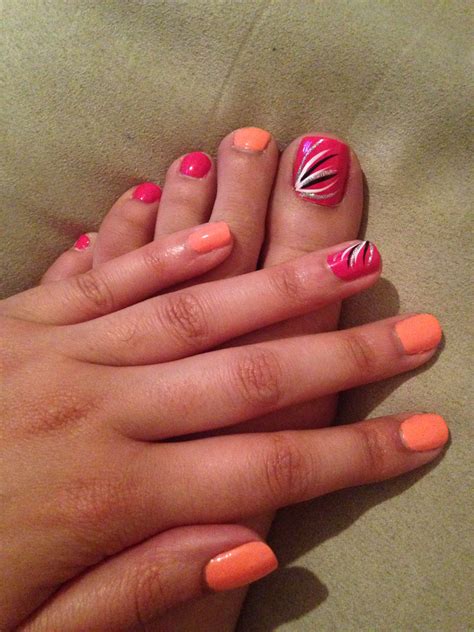Learn the causes, symptoms, home and professional treatments, and prevention of nail fungus to keep your nails healthy and fungus-free.
Understanding Nail Fungus Causes
Contents
Nail fungus, also known as onychomycosis, is a common condition that affects many people. The condition is mainly caused by a group of fungi called dermatophytes, but it can also be caused by yeast or mold. These organisms thrive in warm, moist environments, making the toenails a perfect breeding ground for them. When the nails are exposed to these organisms for a prolonged period, they can penetrate the nails and cause an infection.
Other risk factors that can contribute to nail fungus include wearing tight-fitting shoes, having a weakened immune system, and having a family history of nail fungus. Additionally, people who are older, have diabetes, or have poor blood circulation are also at a higher risk of developing nail fungus.
Understanding the causes of nail fungus is crucial in preventing the condition from developing in the first place. By recognizing the risk factors and taking preventive measures, such as keeping the feet clean and dry, wearing breathable shoes, and avoiding walking barefoot in public places, individuals can reduce their chances of contracting nail fungus.
Identifying Nail Fungus Symptoms
If you suspect that you may have a nail fungus, it’s important to be able to identify the symptoms early on. One of the most common symptoms of nail fungus is a change in the appearance of the nail. This can include discoloration, such as yellowing or white patches, as well as thickening of the nail. As the infection progresses, the nail may become brittle and crumbly, and may even emit a foul odor. In some cases, the infected nail may become detached from the nail bed.
Another symptom to watch out for is pain or discomfort in the affected nail. This can range from mild discomfort to more severe pain, particularly when wearing tight-fitting shoes or applying pressure to the nail. In some cases, the skin around the infected nail may also become inflamed, red, or swollen.
It’s also important to pay attention to any changes in the surrounding skin and nail bed. If you notice any redness or swelling around the nail, or if you see any pus or discharge, these may be signs of a nail fungus infection. Left untreated, the infection may spread to other nails or the surrounding skin.
Furthermore, you should be aware of any itching or burning sensation around the affected nail, as this can also be an indication of a nail fungus. If you experience any of these symptoms, it’s important to seek medical attention for an accurate diagnosis and appropriate treatment.
Treating Nail Fungus at Home
One of the most frustrating things about dealing with nail fungus is the slow progress of treatment. Fortunately, there are several home remedies that can help improve the appearance of infected nails and provide relief from discomfort.
One of the easiest and most effective home treatments for nail fungus is using tea tree oil. This natural antifungal has been shown to be effective in killing the fungus that causes nail infections. Simply apply a few drops of tea tree oil directly to the infected nail and surrounding skin every day.
Vinegar is another common household item that can be used to treat nail fungus. The acidic properties of vinegar can help to prevent the growth of fungus, making it an effective treatment option. To use vinegar, mix equal parts of vinegar and warm water in a bowl and soak the affected nails for 15-20 minutes each day.
Garlic has also been found to have antifungal properties, making it a great option for treating nail fungus at home. Crush a few garlic cloves and mix with olive oil to create a paste. Apply the paste to the affected nails and cover with a bandage to allow the mixture to work its magic overnight.
Lastly, maintaining good foot hygiene is essential in preventing the spread and recurrence of nail fungus. Keep your feet clean and dry, wear clean socks and shoes, and avoid walking barefoot in public areas to reduce the risk of reinfection.
Professional Treatment Options
Professional Treatment Options
Professional Treatment Options
When it comes to addressing nail fungus, seeking professional treatment options may be necessary for more severe cases. One common method is the use of oral antifungal medications, which are prescribed by a dermatologist. These medications work by getting into the bloodstream and targeting the fungus from the inside out.
Another professional treatment option is the use of medicated nail polish or cream, which is also prescribed by a doctor. These topical treatments are applied directly to the affected nails and can help to clear up the infection over time. In some cases, a doctor may also recommend surgical intervention to remove the infected nail entirely.
In addition to these methods, laser therapy has emerged as a promising treatment for nail fungus. This non-invasive procedure uses targeted laser energy to penetrate the nail and eliminate the fungus. While more research is needed to determine its long-term effectiveness, many patients have reported positive results.
It’s important to consult with a healthcare professional to determine the most suitable treatment option for individual cases of nail fungus. What works for one person may not necessarily work for another, so it’s crucial to seek expert advice to find the most effective solution.
Preventing Nail Fungus Recurrence
Once you have successfully treated your nail fungus, it’s important to take steps to prevent it from coming back. Preventing nail fungus recurrence requires ongoing care and attention to hygiene. One of the most important things you can do is to keep your feet clean and dry. This means washing your feet daily with soap and water, and making sure to thoroughly dry them, especially between the toes.
Wearing clean socks made of natural materials like cotton or wool can also help prevent the recurrence of nail fungus. These materials are more breathable and can help to reduce moisture and prevent the growth of fungus. It’s also important to avoid wearing tight or ill-fitting shoes, as these can create the warm, moist environment that fungus thrives in.
In addition to good hygiene practices, it’s important to be mindful of places where you might be exposed to fungus, such as communal showers, swimming pools, and gyms. Always wear shower shoes or flip-flops in these types of environments to reduce your risk of coming into contact with nail fungus.
If you have a history of nail fungus, it’s a good idea to regularly inspect your nails for any signs of infection. Catching it early can make it easier to treat and prevent it from spreading. If you notice any changes in the color or texture of your nails, consult with a healthcare professional to determine the best course of action.













